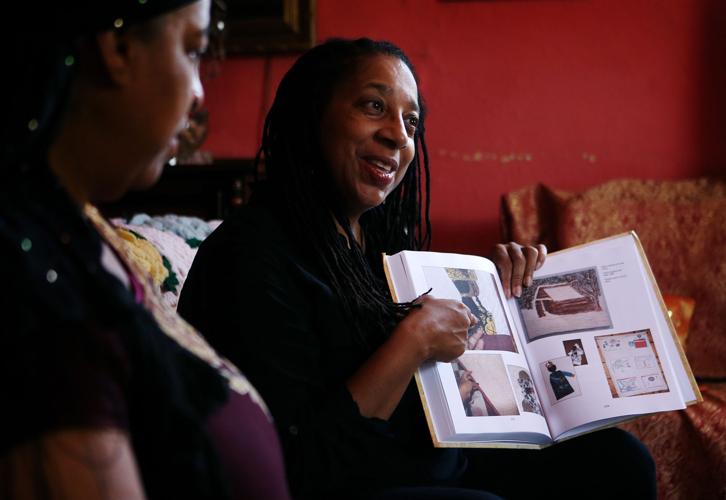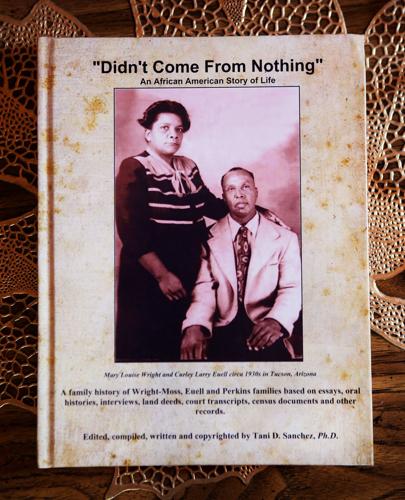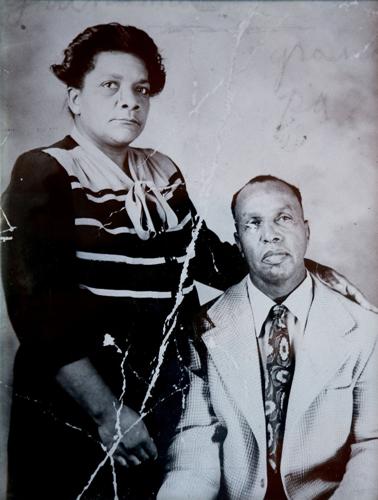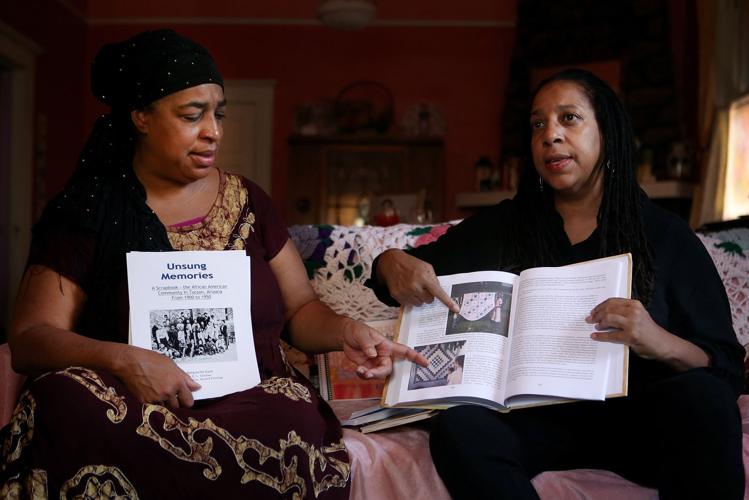When sisters Tani and Derri Sanchez were let out of school, they’d walk to their grandmother’s house, an old elegant home on the edge of the Presidio barrio. There they would do their chores: wipe and wax the dark wood dining table, dust other furniture pieces and do whatever else their grandmother asked. And they would listen to her stories.
Their maternal grandma Mary Louise Wright Euell would retell the family’s history, about the migration from Louisiana to Southern Arizona on a rail boxcar, and the hard work that their grandfather Curley L. Euell did to sustain the family, first as a lumberjack in McNary, on the Fort Apache Reservation, and later in Tucson at Davis-Monthan Air Force Base. The sisters learned about their grandparents’ dedication to family, their diligence in planting their roots, their insistence on getting an education, and they heard stories of other local families who had experienced similar challenges and shared the same values.
“This was routine,” said Tani Sanchez.
For the sisters, the results of that “routine” are years of exploring their deep roots, creating quilts and other artistic endeavors that help tell the family stories, and compiling books about the family history and that of Tucson’s all-too-ignored black community.
“If you don’t know (the history of black Tucsonans) then you will have assumptions that black people were not part of the community,” said Tani Sanchez. “So much history has been hidden.”
For more than four decades, the sisters have unearthed that hidden history.
Their collection of their family stories and those of other Tucson black families include photographs, census and Civil War records, family documents, minutes from meetings of community groups, individuals’ oral histories, and Tani’s and Derri’s genetic testing.
Much of the trove of hard-to-find documents came from their grandmother and their mother, Marguerite Euell Sanchez, who lives with her daughter Derri in the house that Curley and Mary Louise bought in 1938 on West Sixth Street. It’s on the edge of Snob Hollow, which then was mainly inhabited by upper-crust white families, and across the street from Anita and Dunbar Spring neighborhoods where black, Mexican, Chinese and Native-American families made their homes.
“This is really about my grandmother. She saved everything,” said Tani, an associate professor of Africana studies in the College of Humanities at the University of Arizona and a dedicated genealogist.
The first publication was in 1994, “Meals and Memoirs — Recipes and Reflections of African Americans in Tucson,” edited by Tani for the Tucson Chapter of the African American Historical and Genealogical Society as a fundraising project. The 65-page spiral booklet is sprinkled with recipes and brief memories from local contributors.
That was followed by 1999’s “Unsung Memories: A Scrapbook of the African American Community in Tucson, Arizona, From 1900 to 1950,” co-authored by Derri and her mother, Marguerite, who taught at Dunbar School when it was segregated, and later was the librarian at Tucson High School and Safford Junior High School before retiring.
Another publication is “Traditions of Uplift: A History of the Arizona Association of Colored Women’s Clubs,” published in 2007, in collaboration with the National Association of Colored Women’s Clubs, an organization born in 1896 to support black women. It was edited by Tani and La Monica Everett-Haynes. And this year, Tani published the family’s rich history, “Didn’t Come From Nothing: An African-American Story of Life,” which she sells on Amazon.com and is currently updating.
In addition to the books, Derri is an accomplished quilter. She has created quilts with images that reflect her family’s history.
Documenting this history and collecting it is critical to our understanding of Tucson today, said Tani, who teaches a class on hip-hop cinema.
“You get a better perspective,” she said. “The past explains today, although people don’t want to believe that.”
To understand racial inequality, to understand race relations, to understand the successes and aspirations of black Tucsonans, Tani suggests that we read the history of her family and other families who were part of the great migration of black families from the South.
“If you want to know it, it’s there,” she said.







